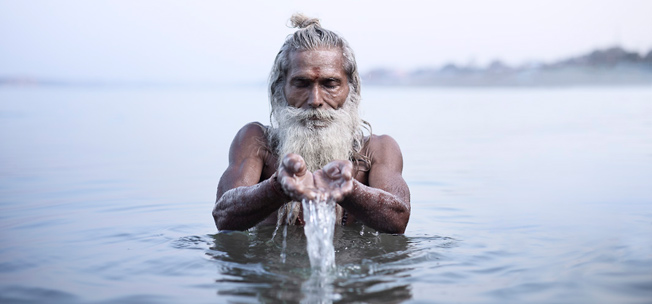
Mauni Amavasya
Practicing silence is an integral part of the path to spiritual upliftment and enlightenment. Mauni Amavasya is a unique Hindu tradition observed on the amavas (no moon day) during the Hindu month of Magh (Jan-Feb). Hence it is also known as ‘Maghi Amavasya’. The word ‘mauna’ signifies silence.
According to the venerated and renowned guru Adi Shankaracharya, mauna is one of the foremost attributes of a saint. Silence is more powerful than thought or speech and it unites an individual with her/his self. One must practice silence to calm a restless mind. Mauni Amavas is the day dedicated for this spiritual sadhna; so on this particular day some people observe complete silence. It is considered an important day for saints and sadhkas. Ultimately, all answers are found in silence. Regular practice of silence enables the sadhak to remain rooted in stillness, despite the outwardly din. The term ‘mauna’ symbolizes attaining oneness with self.
Mauni Amavasya Snan
One significant ritual associated with this day is ‘mauni amavasya snan’. Snan means bath. This practice is very popular in different parts of the country especially in northern India. Taking a holy bath on this day is very important and it becomes even much more valuable when it falls during Kumbh Mela. The name of kumbh mela is inseparable with Prayag in Uttar Pradesh. The largest ever religious gathering takes place in Prayag on the confluence (Sangam) of the rivers Ganga, Yamuna, Sarasvati. Mauni Ammavasya is the most important day for bathing in this holy place. It is popularly referred to as ‘kumbh parva’ or ‘amrit yoga’. It is believed that on this auspicious day the water of the holy Ganges turns into nectar therefore devotees come from far and wide try not to miss this opportunity.
Getting up early in the morning, devotees take a holy dip in the Ganges at or before sunrise. Those who cannot go to the holy river add a little gangajal to their bathing water. Besides, it is a popular belief that one must remain quiet while taking bath. Some devotees observe complete ‘mauna’ on this day. They abstain from speaking and only meditate. This practice called ‘mauna vrat’ is undertaken to restrain the ever flickering mind from ‘kama ,krodh,lobh,moha (desires ,anger, greed and attachment).
It is said that the first Tirthankar of Jainism ‘Rishabhdev’ broke his long mauna vrat on this day and took bath in the holy water of Sangam.
Tarpan
The day of Mauni Amavasya is also appropriate for relieving ‘pitra dosh’. People offer ‘tarpan’ to their pitras or ancestors to seek their blessings. For this people offer food to dog, cow, crow or the needy ones. This day is considered very auspicious for offering charity like food, clothes and other essentials to the poor people.
Kalpwas
The tradition of ‘Kalpwas’ is also worth mentioning here which has been in practice since ancient times. Kalpwasis are the devotees who reside on the bank of the holy rivers for the whole month of Magh and spend the time in meditation. Actually the whole month of Magh right from Paush purnima to Magh Purnima is ideal for the bathing ritual but the day of Mauni Amavasya is the most significant.
Author Ms Hema Trivedi is an ardent devotee of SriKrishna.